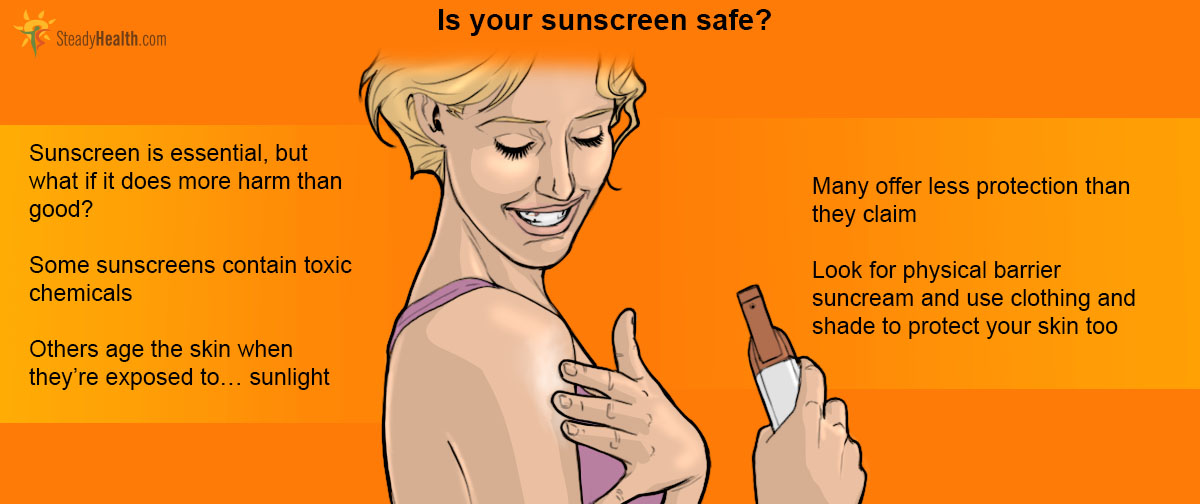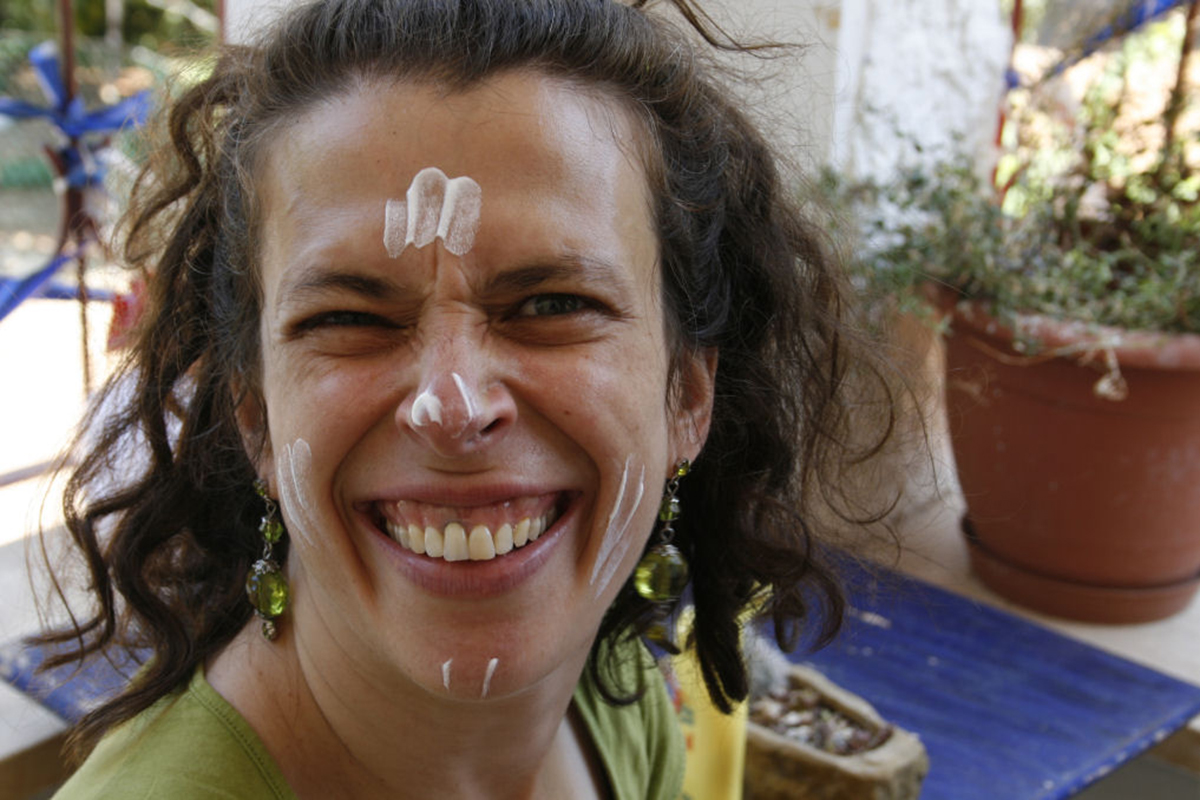Wearing sunscreen is right up there with seatbelts and not smoking in the list of health no-brainers. But not everyone is aware of the reasons it’s important. When everyone tells you you should do it, but no-one tells you why, it's easy to dismiss all the nagging. But this time, the busybodies are right on the money.
Skin cancer rates, once falling, are actually on the rise again as people abandon sunscreen because they find it uncomfortable. But protecting yourself from the sun is vital for health. People worry about vitamin D — but most people will get enough sunlight for their vitamin D needs in about 15 to 30 minutes outdoor activity, even on cloudy days.

The other big myth is that you're safe from sunburn because it’s cold, or it's overcast. But what burns you is UV radiation, not heat, and that punches through clouds and reflects upward from snow, increasing your chances of burning.
Still not convinced?
According to the Skin Cancer Foundation, a person's chances of developing skin cancer double if they’ve had five or more sunburns.
So I just got done selling you on sunscreen. Now I’m going to tell you how dangerous it is.
It’s not that simple. Some sunscreen is safe. Some is really dangerous.
What’s Dangerous About Sunscreen?
A lot of it comes down to the active ingredient. Sunscreen works two ways, physical or chemical. Physical sunscreen reflects the sun’s rays away from your skin before they hit. Chemical sunscreen stops the sun’s rays with chemicals that absorb their energy before they burn you.
Chemical Sunscreens
Chemical sunscreens often contain chemicals like Oxybenzone, Octinoxate, and Octocrylene. Oxybenzone is a pseudoestrogen that’s found in about 97 percent of Americans’ bodies — no, that’s not a misprint. It penetrates the skin and messes with your hormone balance, and it's been associated with low birth weight in infants. One to avoid. Otinoxate is another pseudoestrogen that’s easily absorbed through the skin, and it’s considered unsafe for wildlife because of its estrogen-like effects.
Octocrylene is an active ingredient that absorbs the rays from the sun. But all that energy has to go somewhere. It can't just sit there. It has to become another form of energy - heat, or chemical energy. In the case of Octocrylene it goes to break up the chemical bonds in the substance itself, releasing free radicals that attack the skin and can cause mutations. So if you use a sunscreen containing octocrylene, you’re protecting your skin from damage that can cause mutations by… you see where I’m going with this, right?
READ Fifteen Natural Sunburn Remedies
Physical Sunscreens
Throughout time people have used clay, mud and resin as a physical sunscreen. But smearing yourself with mud isn’t on most holidaymakers’ to-do list. So the active ingredient in most physical sunscreens is either zinc oxide or titanium dioxide. Both are relatively safe but they tend to leave a white mark unless they use miniaturised particles - nanoparticles - of the active ingredient. When that happens titanium dioxide is absorbed by the skin and while it’s safe on the outside of your body, once it gets in it’s a carcinogen.
Could Your Sunscreen Be Dangerous?
Other Sunscreen Ingredients
You don’t just have to watch out for toxic active ingredients. Other ingredients, including seemingly innocuous ones, can be found in sunscreens. A good example of that is retinyl palmate. Made from palm oil, this is a version of Vitamin A, which sounds like it would be a good thing. In fact, though, when it’s exposed to sunlight, it breaks down into chemicals that can be carcinogenic.
Spray-on Sunscreen
No-one should need to have the appeal of spray-on sunscreen explained to them., Put it this way: If you don’t get why spray sunscreen is tempting, I know for a fact you don't have kids. But spray sunscreens normally have all the same nasties as other chemical sunscreens, plus they’re aerosolized. Even the ones that work by a physical pump, not an onboard propellant, produce a fine mist that’s easily inhaled and absorbed through the lining of the lungs.

Sunscreen That Just Plain Doesn’t Work
Sunscreen protection is based on SPF — sun protection factor.But SPF can be very misleading. You’d think a sunscreen with SPF 60 would be twice as effective as SPF30. But what does effective mean? SPF measures how long you can stay in the sun without burning. SPF 30 means you can stay in the sun 30 times longer without burning. But the higher you go the less reliable SPF is. When a SPF 100 sunscreen was tested independently it came in with SPFs ranging from 37 to 83. The chances are your high-SPF sinscreen doesn’t offer anything likethe protection it claims. And the kicker is, SPF only measures one kind of UV light:the kind that gives you sunburn. Trouble is, it’s the other kind that gives you cancer - and SPF doesn’t measure that at all.
I feel your pain. Especially if you’re a person of color, bright white isn’t really your shade for sunscreens. But good non-nano zinc oxide sunscreens don’t have to look like gloss paint. And there’s a secret weapon: tinted zinc oxide.
Zinc oxide is white. As in, WHITE. But that means it takes on the color of whatever's next to it, so it’s possible to make a sunscreen that’s basically zinc oxide, plus the base — an oil, normally — and a tinting agent. Basically we’re talking sun-resistant foundation. While the idea of wearing foundation might not appeal to guys, it’s often undetectable and it beats wearing something that actually plays havoc with your hormones.
READ Beware Of Sun Damage To Your Eyes
If that doesn’t appeal, your best options are to have an anti-sun strategy. This should include gradually acclimatising. Being tanned isn't what exposes you to the risk of cancer, it's being burned that does the damage,m so build sun exposure slowly. And combine an effective sunscreen with long sleeves, a hat or head cover, and regularly seeking shade, even if it’s only for ten minutes at a time. Try to stay out of the sun during the hottest, brightest parts of the day - basically, whenever your shadow is shorter than you are — and monitor yourself for signs of discomfort that come before burning. Remember that it's really easy to get sunburned in the water: water isn’t opaque to UV so you can get burned through it but it does reflect UV, meaning that you can get a sunburn from underneath if you’re in a boat!
- SkinCancer.org http://www.skincancer.org/prevention/sunburn/facts-about-sunburn-and-skin-cancer
- EWG.com http://www.ewg.org/2015sunscreen/report/whats-wrong-with-high-spf/
- Photo courtesy of miss pupik via Flickr: www.flickr.com/photos/miss_pupik/1231275978
- Photo courtesy of miss pupik via Flickr: www.flickr.com/photos/miss_pupik/1231275978
- Mind map by SteadyHealth.com
- Mind map by SteadyHealth.com


Your thoughts on this